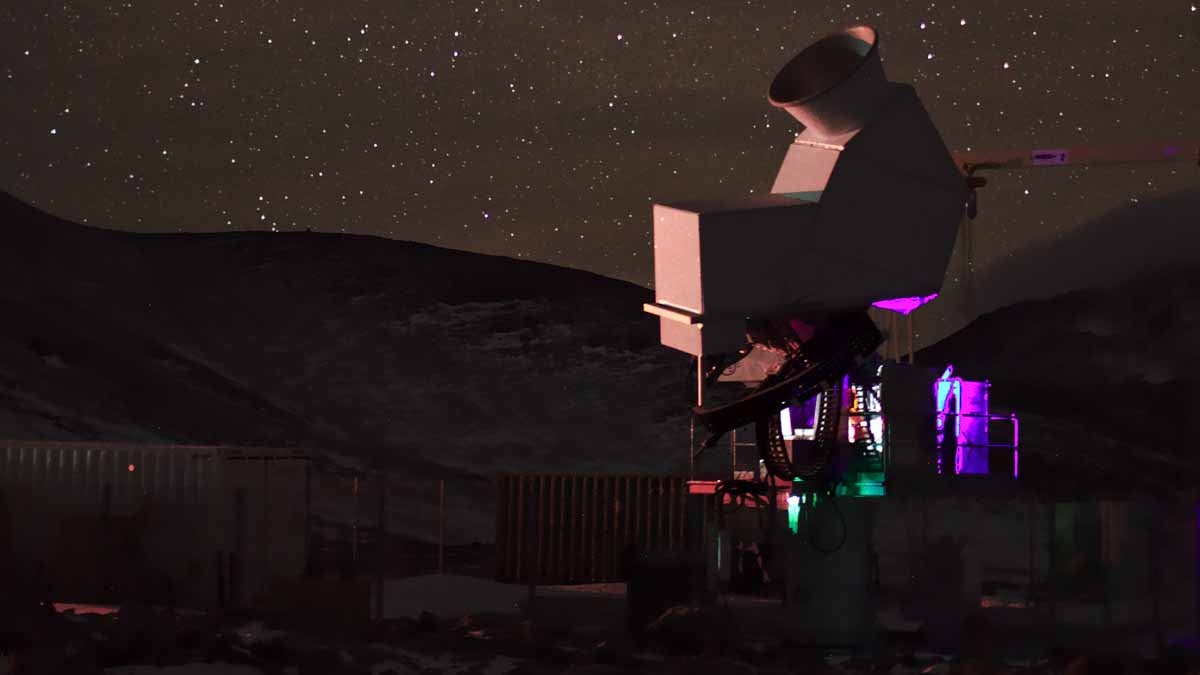Searching for a tiny signal from the very beginning of the universe
Listen
A photo of the first CLASS telescope observing the sky at night in the Atacama Desert in Chile. (Courtesy of Johns Hopkins University)
The air is thin on Cerro Toco Mountain, high up in the Atacama Desert in Chile, and breathing can be a bit of a challenge. But all is forgotten with a look at the stunning night sky.
“It’s incredibly beautiful, there’s very little light pollution at all,” says Villanova University astrophysicist David Chuss. “You can see the Milky Way, it’s a very beautiful experience.”
Right now, Chuss is interested in something the human eye can’t see, though. He’s working on a big international project exploring the cosmic microwave background, which scientists describe as leftover thermal radiation from the beginning of the universe. “If we think of the history of the universe as a calendar year, this radiation comes from the first few moments after the clock strikes midnight on New Years Eve.”
This radiation was first detected about 50 years ago, and since then, scientists have looked for ways to mine it for information about the beginning of the universe.
Chuss just came back from Chile where he is one of the scientists setting up an instrument to further those efforts, called “cosmology large angular scale surveyor” or CLASS. The first part of CLASS is already up and running. Johns Hopkins University is leading the effort, and it’s funded by the National Science Foundation.
“We are trying to provide evidence for, or against, the idea that the universe underwent this very rapid exponential expansion in its first trillionth of a trillionth of a second,” explained Chuss. “If that happened, that cosmic inflation would have imprinted a faint but distinct signal on the cosmic microwave background, and we are searching for that signal among all this other stuff.”
Chuss’ work could fill in some of the initial conditions of the big bang, and could characterize the physics of what happened.
The instrument, CLASS, consists of two telescope mounds holding two telescopes each, it’s about 30 feet tall, and each mount weighs 18,000 pounds.
“The telescope is not one you can look through because we can’t see microwaves, it is making maps of the sky,” said Chuss. The signal they are trying to isolate is a polarized signal, and the telescope is built in such a way to filter all of the waves accordingly. If you imagine a chorus of 1,000 voices, you are trying to hear one voice, and single it out.
If the efforts are successful, it would prove that inflation happened, and then scientists could examine what might have caused inflation. This could get us closer to some of the big questions humanity has wondered about for ages; how the universe began, and what got it all started.
Chuss says scratching at the big questions motivates him every day. “In some ways it gives you this sense that we are a very small part of this very big thing, but on the other hand, we are able to figure these things out,” he said. “We can take light that’s been streaming to us from over 13.8 billion years in the past, and decode it, and figure out what’s going on with the physics– to me that is one of the coolest things we can do.”
WHYY is your source for fact-based, in-depth journalism and information. As a nonprofit organization, we rely on financial support from readers like you. Please give today.




